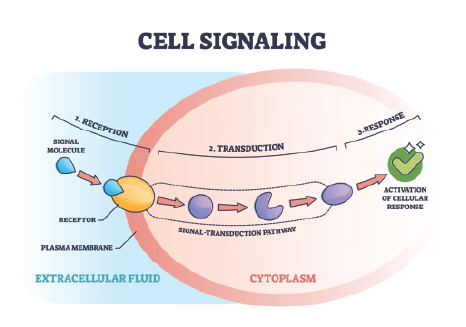Metabolic Types and Subtypes as Recognized in HTMA Patterns
Many clients have asked questions about the metabolic subtypes that are determined in the HTMA mineral patterns. Although each type is described in individual reports, this discussion will provide further details.
Sympathetic and Parasympathetic Metabolic Types
The Sympathetic Metabolic Type 1, is also known as Fast Metabolic Type 1. The Parasympathetic Metabolic Type 1 is known as the Slow Metabolic Type 1.
In review, the Fast Type 1 indicates a dominance of the Sympathetic nervous system, while the Slow Metabolic Type 1 is indicative of Parasympathetic neurological dominance. Typically when the Sympathetic Nervous system is dominant the Sympathetic endocrines making up the Sympathetic Neuroendocrine System (SNES) will also be dominant and includes;
- Ventromedial Hypothalamus
- Anterior Pituitary
- Adrenal Cortex (zona fasciculata)
- Adrenal Medulla
- Thyroid
- Testosterone
- Progesterone
Parasympathetic neurological dominance is associated with the Parasympathetic Endocrine System (PNES) dominance and includes:
- Lateral Hypothalamus
- Posterior Pituitary
- Adrenal Cortex (anabolic)
- Thymus
- Pancreas (endocrine)
- Parathyroid
- Estrogen
Generally speaking the stimulatory endocrine and sedative endocrines correspond to the neurological dominance. However, due to various stages of stress the two can be intermingled.
Slow Metabolic Type 2
Below is a graphic presentation of the Slow Metabolic Type 2 mineral pattern.
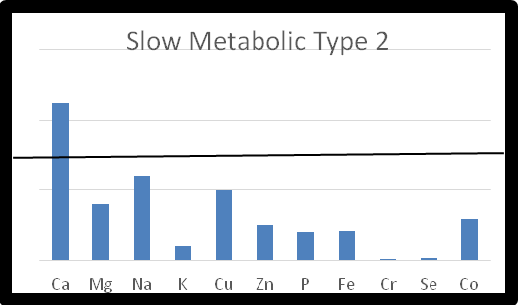
Note that sodium is elevated relative to magnesium. This pattern suggests an acute stress reaction. The stress may be physiological, psychological, or a combination of both. This would also indicate an alarm phase of stress due to the elevated sodium-to-potassium ratio. An increase in stress activates an adrenal response and in particular pro- inflammatory hormones. This reaction results in an increase in magnesium loss and a relative magnesium deficiency can then ensue. Lowered magnesium can produce an enhancement of the stress response as well. The stress contributing to this mineral pattern can be associated with a number of health conditions if it becomes chronic, such as inflammation, intestinal conditions, irritable bowel syndrome (IBS), and gastritis, as well as anxiety. Since sodium and potassium are also under renal control, any major imbalance between these two elements could indicate a renal issue. Adrenal support is often necessary to aid in enhancing the resistance and recovery stage of stress.
Slow Metabolic Type 3
The next graph is indicative of the Slow Metabolic Type 3 mineral pattern.
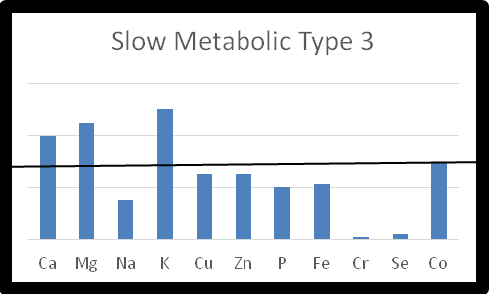
The sodium-to-potassium ratio is low as is the calcium-to-potassium ratio. This pattern can be related to the resistance stage of stress. The low Ca/K ratio would suggest that thyroid activity may be elevated, however this could be due to the adrenal response unrelated to the thyroid expression. The elevated potassium relative to the sodium or low Na/K ratio indicates that a chronic resistance stage of stress is present. This would result in increased glucocorticoid output leading to a catabolic dominance. Again, any major dysregulation between sodium and potassium should alert the practitioner to the possibility of renal involvement. This pattern can suggest protein breakdown or chronic degenerative health conditions, as well as glucose disturbance. Adrenal support will aid recovery from the resistance stage of stress.
Slow Metabolic Type 4
The Slow Metabolic Type 4 mineral pattern shown below would be indicative of a controlled resistance stage of stress as evidenced by the lowered Ca/K ratio and elevated Na/Mg ratio with a normal Na/K ratio. This would be considered a normal pattern related to the various stages of the stress reaction. This is to say that the stress is being handled properly and recovery should occur.
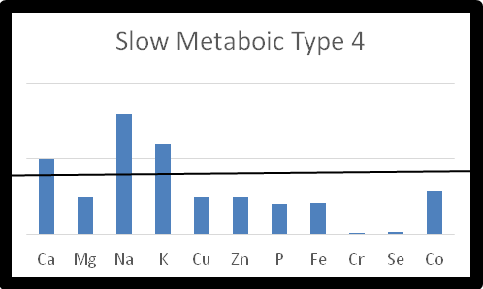
Fast Metabolic Type 2
The following is an example of a Fast Metabolic Type 2 pattern which is showing a sympathetic neurological dominance. The elevated sodium-to-magnesium represents adrenal dominance while the elevated calcium-to-potassium indicates a trend toward reduced thyroid expression. This pattern is also related to a possible acute stress reaction and inflammatory trend. This can lead to episodic increases in blood pressure due to an enhanced stress response.
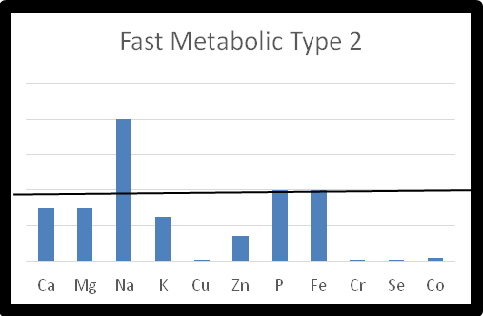
Fast Metabolic Type 3
This Fast Metabolic Type 3 pattern is associated with sympathetic neurological dominance, but due to the low sodium-to-magnesium ratio, adrenal insufficiency may be developing or is actually present. The low calcium-to-potassium would indicate thyroid dominance and or excessive glucocorticoid production reflected in the low sodium-to-potassium. This can be viewed as a chronic resistance stage of stress or the beginning of the exhaustion stage of stress.
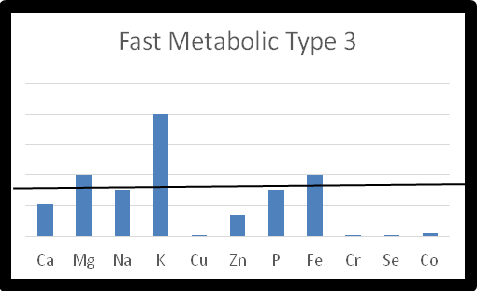
Fast Metabolic Type 4
This Fast Metabolic Type 4 pattern can be the result of exhaustion even though sympathetic neurological dominance is still present. This is often a pattern of the “burn out” syndrome as chronic stress has resulted in the reduction of both adrenal and thyroid activity. Eventually this pattern can progress to a Parasympathetic or Slow Metabolic Type 1 pattern.
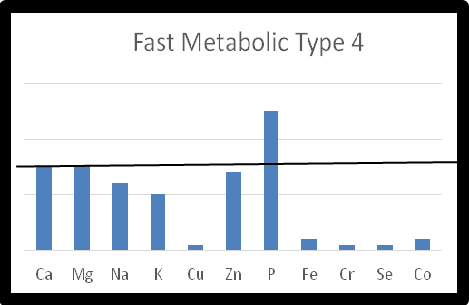
In review, the subtypes typically represent various stages of stress in both metabolic types. Stress can produce a de-synchronization between the nervous and endocrine system. This can be due to the body attempting to adapt. Each stage of stress must progress for normal recovery. For instance, when a pattern is indicating an alarm stage of stress, support is necessary for the second stage, or resistance phase to develop and ultimately recovery.
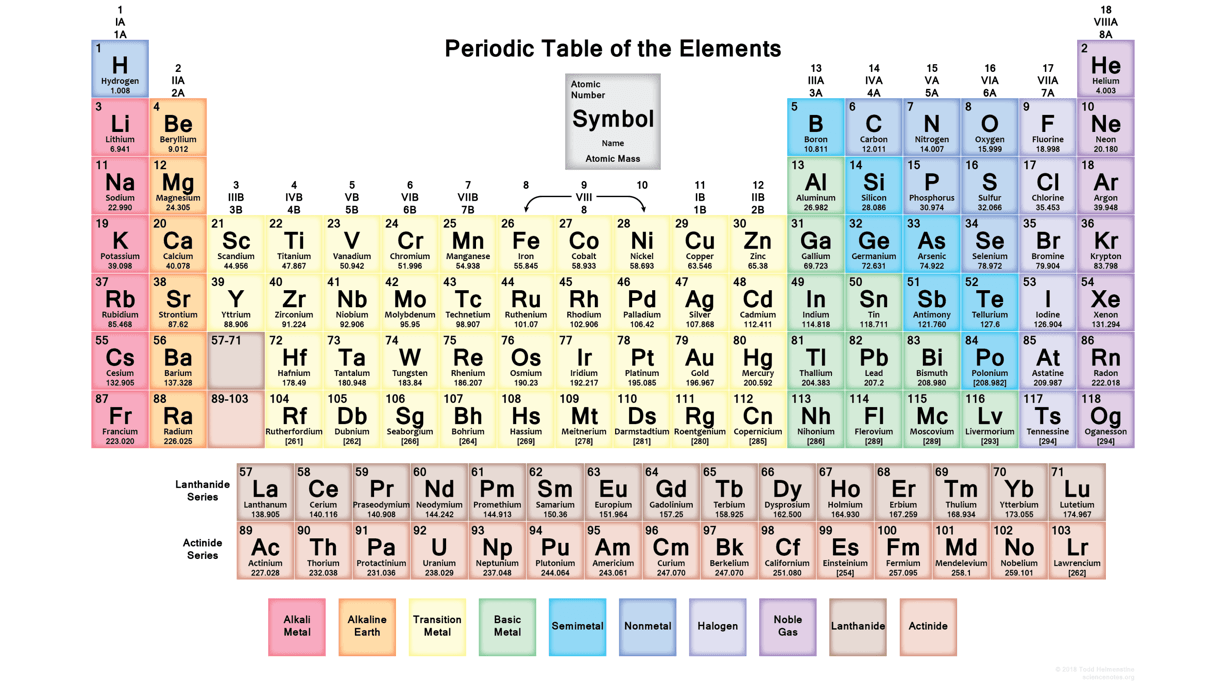
Have you ever looked at the Periodic Table of Elements? These elements make up everything in the universe! Everything; including us. In fact, we are the microcosm of the macrocosm. In Biblical terms, we are made in God’s image. In chemistry, we are composed mostly of about 40 elements on the Periodic Table. Our make up is essentially the combination of elements made flesh, with the spark of spirit that gives us life.
In the Hair Tissue Mineral Analysis (HTMA), the biological activity of 37 Elements is measured. They are: 15 important Nutritional Elements, 8 Toxic Heavy Metals, 14 Trace Elements. With the information of the HTMA, we now know what is available and being used in the body or what is lacking. Health begins to deteriorate when cell metabolism does not have the right foods and elements it needs. A mineral imbalance follows. Over time, function goes down and structure begins to lose its integrity. With the right foods and a balance of elements on a daily basis the body’s cells will repair and reverse aging.
The HTMA will show:
- How to avoid disease states
- Any toxic or heavy metal overload
- A complete profile of 37 different elements
- The correct diet schedule based on your biochemistry
Contact Johnny to order your HTMA today - $226 USD
Best Selling author Johnny Delirious worked with one of the first pioneers to use the scientific modality - Hair Tissue Mineral Analysis (HTMA), to get the right diet and supplements to experience life free of disease. The guessing game to achieve good health is over. Today he gives his expert advice with over 40 years of experience as a professional in the health industry.

Dr. Michael Rudulph Maxon, AKA Johnny Delirious, Laboratory Naturopathic Doctor, gives expert advice rooted in holistic healing principles, drawing on 40 years of professional experience in the health industry. He helps his patients recover and heal using food and Ancient Greek therapies, utilizing organic remedies that are all backed by modern laboratory science. He is unquestionably the only TRUE Addiction & Hepatitis A, B, and C Recovery Pioneer. Free of mood-altering substances (cocaine) since 1991, with no viral load or antibodies of hepatitis since 1994, and no cirrhosis since 1995. Nobody in his life—including doctors, friends, and family—thought he would live past 1992; they all said he was going to die. But, Johnny chose life, not death, and learned how to heal his body, mind, and spirit by developing new protocols with natural therapies, including the thoughtful application of homeopathic remedies where appropriate. For over 20 years, he has helped many others recover, including professionals like doctors, dentists, and lawyers, who prefer alternative medicine over chemical drugs or surgery to address the same conditions that everyone said were hopeless.
Contact Johnny for a Hair Tissue Mineral Analysis (HTMA) to get the right diet, supplements, and expert advice, benefiting from his 30 years of experience in these specialized protocols.
United States - 972-825-7912
http://www.johnnydelirious.com

